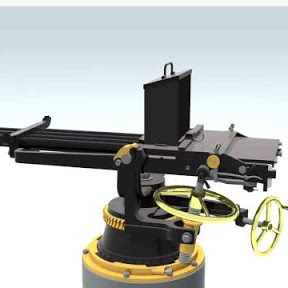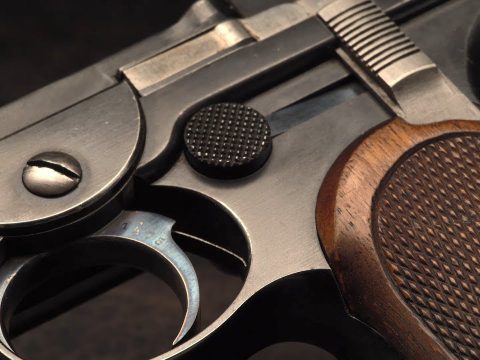The Armstrong 7 inch (110 pounder) rifled breech loaded gun was constructed using Armstrong’s method of shrinking concentric wrought iron hoops over a toughened and rifled A tube.
The rifling consisted of 76 grooves, and the shell was coated with a thin sleeve of lead that gripped the rifling.
The 7 inch gun was ordered by the British Government, despite Armstrong’s view that the mechanism was unsuited to heavy guns. The first guns entered service in 1861, but it became clear in naval use that the shells did not have the velocity to penetrate the armour of warships of that era. While the Royal Navy then reverted to muzzle loaded guns, albeit rifled rather than smoothbore in 1864, the 7 inch rifled breech-loaded Armstrong guns were supplied to the coastal defence forts (Palmerston Forts) built during 1860 -1870s. Some of the 7 inch guns remained in service until 1902.
Many of these Palmerston’s Forts were designed to protect major ports from an invading force that landed nearby and attacked from the landward side. These forts became known as ‘Palmerston’s Follies’ as the guns faced inland.
The 7 inch Armstrong guns were well suited to defending against an invading army, firing explosive shells against siege works, segmented shell agains large bodies of men or equipment and canister shot at short ranges. The guns and their crews had to be protected. This was either by mounting the guns in casemates or the novel disappearing gun mounting invented by Sir Alexander Moncrieff (1829 – 1906) in 1858. The Moncrieff mounting allowed the gun to be reloaded while protected by a thick parapet, then raised to fire, only exposing the gun briefly. The Moncrieff system also allowed the gun to be trained over a wide arc, unlike the casemate guns which were limited by the gun port.
This animation was created using Cinema 4D, Quicktime and iMovie.
Music: Light Expanse (Unicorn Heads)
Primary reference: 7-inch Rifled Breech-Loading Guns of 72 cwt and 82 cwt, on Moncrieff and Sliding Carriages – 1892. (Melbourne Public Library)
My thanks also to members of the Portsdown Artillery Volunteers and Royal Armouries, Fort Nelson.

Hi, I’m Rob, otherwise known as VBBSMYT.
I create the animations on my iMac using Cinema 4D, which I find very intuitive, and allows me to add smoke and flames, and then send the model to my trusty Render farm.
I make my models as accurate as possible through reference books and particularly good drawings. You may have seen my animations of early torpedoes and machine guns on YouTube. I enjoy finding out how things work and it has been fascinating to track the development from the late Victorian period up to World War 1.





